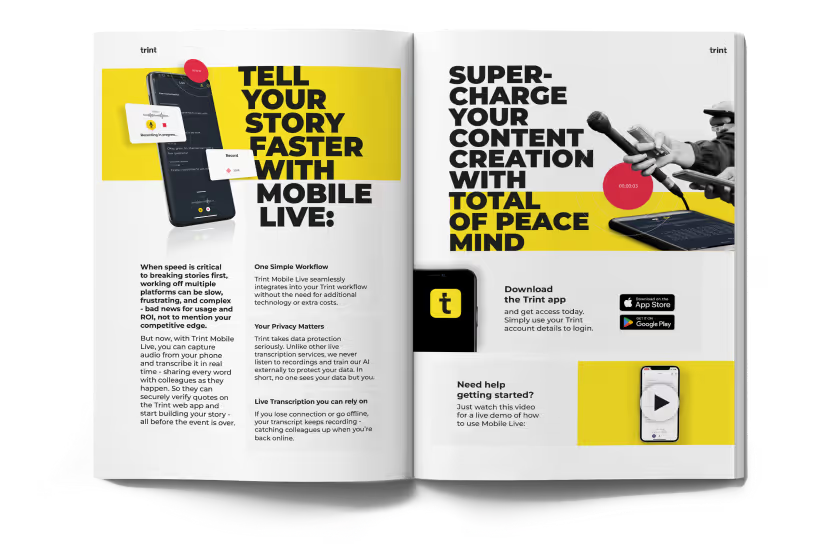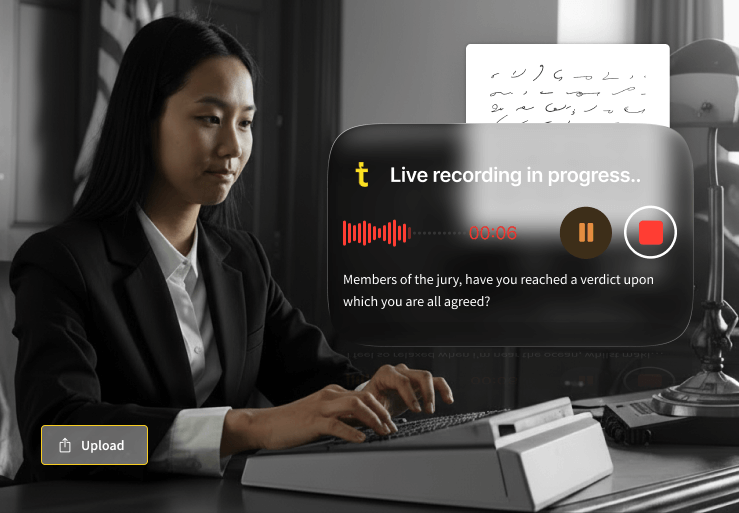
In this guide, we'll break down what bylines are, explain why they matter and show you how to write one that does you — and your story — justice.
The definition of a byline
A byline is a credit line that attributes a piece of writing to its author. Its primary purpose is to identify the writer of a story, typically in newspapers, news websites, magazines, blogs or other publications. Bylines usually appear between the headline and the main body of an article, though they can also be placed at the end of the text.

The benefits of bylines
For journalists, a byline is a way to receive credit for their work and build a portfolio of published articles. In the digital age, bylines are an essential tool for SEO, helping journalists enhance their online presence and gain visibility on search engines.
Bylines provide an opportunity for journalists to showcase their qualifications and expertise, boosting the credibility of their reporting. In some contexts, a byline can provide an opportunity to promote other projects and share links to social media profiles, helping journalists expand their online following.
For readers, a byline is a valuable resource, revealing the author behind an article and offering insight into their qualifications and reliability. It also helps readers to discover more journalism from the same author or follow up on related stories.
What's the story behind bylines?
Journalists have been attaching their names to their writing since the dawn of the press. However, the practice of bylining all articles to an author wasn't always as widespread as it is today.
It's thought that bylines first became popular during the American Civil War. Before the war, a lot of day-to-day news reporting was published anonymously. It was thought that this helped journalists be bolder and more honest in their reporting, helping to foster a thriving free press.
Unfortunately, the absence of bylines also made it difficult to hold journalists accountable for their work — and this became a significant issue when the Civil War broke out. Military leaders feared that leaked secrets or false reports published anonymously could undermine the war effort. So, in 1963, Union generals mandated that all war correspondents must "publish their communications over their own signatures". (The New York Times Archive).
By the late 19th century, bylines were becoming increasingly common, reflecting the growing status of celebrity journalists in the era of 'yellow journalism' ushered in by Pulitzer and Hearst. In 1925, the Associated Press published its first story with a byline, setting a precedent that is still followed today. For aspiring journalists, securing that first byline remains a key milestone in your early career.
What should be included in a byline?
- Your name
- Your job title
- Your qualifications. Stick to degree level or higher: the reader doesn't need to know where you went to middle school.
- Details of relevant work experience. Again, the reader doesn't need to know about your college summer jobs, so keep it relevant to your journalism or the story you're writing.
- Examples of previous publications that have featured your work. If you're a freelancer and write for many publications, you could list some of the most prestigious places your work has been published.
- Some fun personal details. For articles that are a bit lighter in tone, you might want to add some 'color': that is, a few insights into your life outside of work, like your favorite hobbies or pets. Just make sure it's appropriate for the tone and nature of the article, though.
- Details of where the reader can find more of your work. For example, a link to your blog or website.
- Promotion for your ongoing projects: If the publication you're writing for will allow it, you can also take the opportunity to promote your other projects, such as a book or podcast.
- Your professional social media handles, if you're happy for readers to contact you or aiming to grow your online following. Be warned: if your article is contentious, then you might want to think twice before sharing your contact details!
How to write a byline
Whether you're a journalist with a regular beat, a freelancer or a blogger, writing a good byline is an important skill to have in your arsenal. Here, we've shared our top tips for writing bylines that do your stories justice.

Keep it short
As with most things, less is more. So, keep your bylines to the point. Around two to three short sentences is the sweet spot. When writing for a publication, the editor will often specify a word count, especially if you're writing for print.
Summing up a career’s worth of achievements in just a few words can be surprisingly tricky. If you're struggling, start by focusing on the essential details we've outlined above. Then, refine and edit until your byline is as lean and impactful as possible.
Showcase your credentials
Clearly stating your qualifications and experience in your byline not only demonstrates your expertise but also enhances the trustworthiness of your reporting. So, if you have relevant credentials, be sure to mention them. For example, if you're writing about a new change to financial regulation and have a strong background in finance journalism, it's natural to highlight that expertise. However, if your background isn't directly relevant to the topic, it might be better to leave it out.
Boost your profile
Some bylines can also provide a valuable opportunity to promote your other projects. This might be a book, a blog, a podcast or anything else you want to spread the word about. So, ask the editor whether you can plug your next big project in the byline.
Add your contact info and social media handles
You could also consider adding your professional social media handles, an email address or another way to contact you. While not essential, this gives interested readers a way to follow your career and also offers a way to reach out to you with further tips or information about a story. Including your contact details also provides a way for editors at other publications to get in touch about a commission or other offer of work.
5 quick byline examples
Want to see the above tips in action? Check out our five (fictitious) examples to learn how to write bylines that hit different notes, from classic and concise to personal and promotional.
Keep it classic
John Smith
Senior Political Editor
@johnsmithwrites1
Short and sweet
John Smith is the Senior Political Editor at The Townsville Gazette. Connect with him at @johnsmithwrites123.
Flex your credentials and experience
John Smith is Senior Political Editor at The Townsville Gazette. He holds a Masters Degree in Journalism and Media from Townsville University. He has previously worked for Townsville Times, the Washington Reporter and ran the The Washington Insider blog between 2007 and 2016. His book, Inside the Beltway: 10 Years as a Washington Political Insider, was shortlisted for the Gold Medal Non-Fiction Award in 2024.
Add some color
John Smith is Senior Political Editor at The Townsville Gazette. Born in Pennsylvania, he holds a Masters Degree in Journalism and Media from Townsville University. When he's not in the newsroom or cheering on the Philadelphia Eagles, he enjoys running, wild swimming and brewing (and drinking) beer.
Promote your latest projects
John Smith is Senior Political Editor at The Townsville Gazette. He is the author of the Gold Medal-shortlisted non-fiction book Inside the Beltway: 10 Years as a Washington Political Insider, which is available now. You can read more of his political analysis on his blog, The Weekly Spin, which updates every Tuesday.
Writing your first news story or article? Check out our guide to the five Ws of writing to learn how to structure it like a pro. You can also brush up on more newsroom jargon in our glossary of journalism terms.
If you're looking to build a career in the media, don't miss the Trint Creator Hub. With articles on everything from pitching stories to editors to SEO for journalists, it's a goldmine of resources for seasoned reporters and rookies alike.
With Trint's AI transcription software, you can create compelling stories in less time. Designed by journalists, our Story Builder helps you turn raw footage or interviews into polished articles without the need for tedious manual transcription. Then there's the Trint mobile transcription app, which lets you transcribe on the go. Book a demo today to get started or try it for yourself with a 7-day free trial — no credit card required.
You've written a great article — now it's time to take the credit you deserve. For journalists, bylines are more than just a name on a story. They're also a valuable way to build your profile, enhance your credibility and grow your following. If you know how to write a good one, that is.

DON'T take our word for it
Download our eBook, Telling Stories Faster With Trint, and hear how Trint is making content creation faster, easier and, most importantly, painless for newsrooms across the world.
Download








